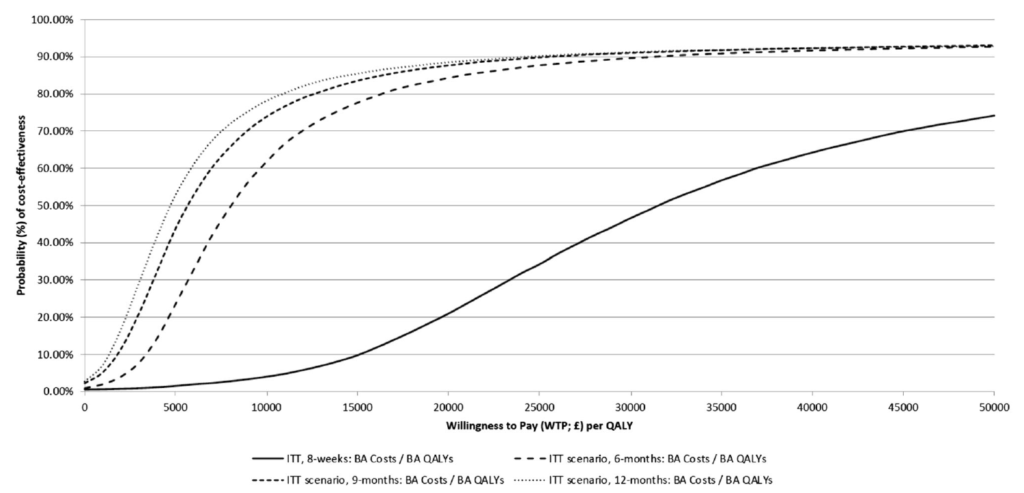
Transgender and gender diverse people (TGD) are a highly stigmatised and minoritised group (Hughto et al, 2015; McNeil et al 2012). Healthcare service access is also poor amongst TGD people, and experiences once in services continue to be sub-standard. Carlile et al. (2020) reported on trans youth and their parents’ experiences of healthcare, finding that there were numerous examples of: 1) professionals lacking experience and knowledge of trans health issues, 2) increase in mental distress caused by long wait-lists, 3) cisnormative assumptions on gender, which refers to the assumption that being cisgender (not transgender) are the default, and 4) direct discrimination from healthcare settings, with examples such as misgendering and deadnaming (these terms relate to the use of incorrect pronouns and using names that the person no longer uses).
The stigmatisation, marginalisation, and discrimination faced by TGD people have resulted in elevated risk of poor mental health, including suicidality, depression, and anxiety (Rotondi et al, 2012; Budge et al, 2013). Recent surveys purport suicidal ideation at 84% across the lifetime for TGD people and attempt at 48% (McNeil et al, 2012). There is growing evidence that societal transphobia (anti-transgender bias, non-affirmation) underpins the elevated mental health disparity, and more attention is being placed on how mental health services can help prevent and intervene on these issues (Barr, 2018)
Now, I want to bring to your attention the paper I will review and offer my own insights today. Strauss et al. (2020) report on findings from the Trans Pathways study and their aim is to explore the experiences of TGD people in Australia who have accessed mental health support (including counsellors, therapists, psychiatrists, and/or inpatient healthcare providers).

The stigmatisation, marginalisation, and discrimination faced by TGD people have resulted in elevated risk of poor mental health, especially suicidality, but also other mental health conditions, such as anxiety and depression.
Methods
Trans Pathways is a national cross-sectional survey, which examines the mental health of TGD people and their experiences with services, based in Australia.
The study itself is co-produced with TGD community members, which included TGD people in the development of the study, and focuses questions on drivers of mental health difficulties, barriers to mental health services, and positive influences on mental health.
The study was conducted online and recruitment focused on various social media groups, support groups, gender identity clinics, and word of mouth. The authors give a brief overview of measures included, which consist of open-ended questions on reasons for accessing a service, age at when they attempted to access a service, how long they waited, and frequency of access attempts. Services were scored on a five-point Likert scale in terms of satisfaction, and whether service members were respectful of their gender.
Results
A total of 859 TGD people were recruited to Trans Pathways and were aged between 14 and 25:
- 29% reported their gender as trans male
- 15% as trans female
- 48.5% as non-binary.
Services
The authors provided a detailed summary of which services were accessed, giving differences by the sex assigned at birth, frequency, how long the participants had to wait before being seen at the service, satisfaction with services, and whether their gender was respected. They indicated that mental health services were commonly accessed by those under the age of 18, whereas psychiatric services were more commonly accessed by over 18 year olds. The authors highlight that “male assigned at birth” participants more commonly accessed psychiatric services (~52% compared to ~40%).
Therapy and counselling
A majority under the age of 18 had accessed therapeutic services (59%) with considerably high satisfaction with regards to respect of gender (72%). Participants also experienced relatively short waiting times for their appointments with ~77% waiting one month or less. The reasons for this are complex, with some being seen so quickly due to a recent suicide attempt and already being in a hospital, and finding that those with suicidal thoughts and behaviours acted as a catalyst for being seen promptly.
Immediately, as I was in crisis when I wanted to see [a mental health professional] so they let me see them right away which was very lucky.
Other reasons for accessing services centred around depression, anxiety, and gender specific needs, as well as non-specific mental health concerns. Many of the expressions centred on needing help with “navigating the world” in their affirmed gender.

This Australian survey found that experiences with a variety of mental health services were either somewhat poor or overwhelmingly poor for trans and gender diverse people.
Psychiatric services
In the reverse of the findings with therapeutic services, the authors suggested that psychiatric services were more commonly accessed by those who were over 18 years old.
In their sample, 64% of TGD people felt that psychiatric services were respectful of their gender identity, showing support of the person’s gender. Other positive experiences centred on the participant feeling that the psychiatrist was truly helping them and providing further assistance in transition.
However, the role of gatekeeping access to transition-related healthcare was expressed and seen negatively. Experiences here highlight the feeling that psychiatrists restricted the young person’s access to transition, and “acted in an uncompromising and even patronising manner”. Non-binary young people also felt they needed to hide their identity in order to access any help:
I lied and said I was a binary trans man to gain access to the services I needed. The psych was very focused on gender norms and binary identities, and I felt judged and ‘not trans enough’ because some of my hobbies are traditionally ‘feminine’ things.
Mental health inpatient services
Mental health services were found to be particularly lacking in respect of the young person’s gender and were rated as mostly unsatisfactory. Those who were under the age of 18 were more likely to attempt access to mental health inpatient services (56%). However, 7% stated they could not access inpatient services, despite trying. Reasons for accessing inpatient services mostly related to self-harm and suicidal ideation and/or attempt. Gender dysphoria played a role in some people seeking inpatient services, whereas others discussed mental health issues in relation to their gender.
Experiences appear negative, with some TGD young people reporting that their name and pronouns were not used, with providers instead opting to deadname and misgender the young person. Furthermore, despite some clinicians acting in a respectful manner, there were frequent experiences of transphobia and non-affirmative approaches to gender diversity.
Conclusions
The Trans Pathway study highlights a need for further training to improve clinicians’ knowledge on trans issues and provides a call for help from clinicians to better address the mental health disparity.

The trans pathway study highlights a need for further training to improve clinicians’ knowledge on trans issues and provides a call for help from clinicians to better address the mental health disparity.
Strengths and limitations
Trans Pathways is a fascinating study that I believe has contributed greatly to our understanding of TGD youth mental health experiences. The large sample size is granting us the ability to highlight the clear disparity in access and service experience.
However, something I consider important to discuss is the use of “sex assigned at birth” (SAAB). It is unclear why the emphasis is placed on SAAB when gender would be better placed to respect the identities of the participants. This is a common issue within trans health research and is rarely challenged. What are we saying when we place emphasis on SAAB? Basing analyses on SAAB comes across as unnecessary when including self-reported gender.
Furthermore, arguments around representativeness are also contested because there is little understanding of the true prevalence of trans people, due to the inherent difficulty in sampling those who are “closeted” or may not seek support from services or support groups (Miner et al, 2012). After searching the Summary of Results paper by the same authors it was found that 3.7% of the participants were Aboriginal and Torres Strait Islanders (Strauss et al, 2017). The authors indicate that this is representative of the aboriginal and Torres strait islander communities in Australia; however, there are no other demographic distributions by different ethnicities. This makes me question the wider applicability of the results to other minority ethnic groups of TGD people, who face additional barriers to mental health services due to the intersection of race and gender (Khatun, 2018; National LGBT Partnership, 2016).

Trans Pathways is a fascinating study that has contributed greatly to our understanding of TGD youth mental health experiences, while its sample grants us the ability to highlight disparities in access and service experience.
Implications for practice
There are multiple means for improving the provision of mental healthcare for TGD young people, with a glaring need for better education of healthcare professionals. The authors highlight that there is evidence that healthcare professionals with appropriate and specific training on TGD issues, tend to exhibit more affirmative and positive attitudes (Riggs & Bartholomaeus, 2016). Mental health services and the professionals who work within the system need to become more proactive in reducing the mental health disparity. There is a need for clinicians to acknowledge implicit bias and work on reducing negative interactions they have with trans service users.

There is evidence that healthcare professionals with appropriate and specific training on transgender and gender-diverse issues, tend to exhibit more affirmative and positive attitudes.
Statement of interests
None.
Links
Primary paper
Strauss, P., Lin, A., Winter, S., Waters, Z., Watson, V., Wright Toussaint, D., & Cook, A. (2020). Options and realities for trans and gender diverse young people receiving care in Australia’s mental health system: findings from Trans Pathways. Australian and New Zealand Journal of Psychiatry.
Other references
Barr, S. M. (2018). Understanding the relationship between anti-transgender bias, non-affirmation, and post-traumatic stress: a model of internalized transphobia-mediated post-traumatic stress.
Budge, S. L., Adelson, J. L., & Howard, K. A. (2013). Anxiety and depression in transgender individuals: the roles of transition status, loss, social support, and coping. Journal of consulting and clinical psychology, 81(3), 545.
Carlile, A. (2020). The experiences of transgender and non-binary children and young people and their parents in healthcare settings in England, UK: Interviews with members of a family support group. International Journal of Transgender Health, 21(1), 16-
Hughto, J. M. W., Reisner, S. L., & Pachankis, J. E. (2015). Transgender stigma and health: A critical review of stigma determinants, mechanisms, and interventions. Social science & medicine, 147, 222-231.
Khatun, S. (2018). The coming out experiences of South Asian trans people living in the UK: an interpretative phenomenological analysis(Doctoral dissertation, City, University of London).
McNeil, J., Bailey, L., Ellis, S., Morton, J., & Regan, M. (2012). Trans mental health study 2012. Scottish Transgender Alliance. Available at: http://www. scottishtrans. org/wp-content/uploads/2013/03/trans_mh_study. pdf [accessed: 20 January 2021].
Miner, M. H., Bockting, W. O., Romine, R. S., & Raman, S. (2012). Conducting Internet research with the transgender population: Reaching broad samples and collecting valid data. Social science computer review, 30(2), 202-211.
National LGBT Partnership (2016). Trans health factsheet on BAME people. https://nationallgbtpartnershipdotorg.files.wordpress.com/2015/02/trans-health-factsheet-bame-final-may2016.pdf
Riggs, D. W., & Bartholomaeus, C. (2016). Australian mental health professionals’ competencies for working with trans clients: A comparative study. Psychology & Sexuality, 7(3), 225-238.
Rotondi, N. K., Bauer, G. R., Travers, R., Travers, A., Scanlon, K., & Kaay, M. (2012). Depression in male-to-female transgender Ontarians: results from the Trans PULSE Project. Canadian Journal of Community Mental Health, 30(2), 113-133.
Strauss, P., Cook, A., Winter, S., Watson, V., Wright-Toussaint, D., & Lin, A. (2017). Trans-Pathways: the mental health experiences and care pathways of trans young people-summary of results.
Photo credits
Talen is a PhD researcher and trans woman who researches and discusses current issues around LGB mental health, trans and gender diverse mental health, healthcare service access, and the impact of discrimination on trans and queer people’s lives. Her research centres on the experiences of trans and gender diverse peoples mental health, particularly suicidality, and how micro-aggressions and other social determinants increase and maintain risk on suicidal ideation, self-harm, and suicide attempt. Talen is also a co-investigator on an NIHR funded study at the Tavistock and Portman NHS Foundation Trust’s Gender Identity Development Service (GIDs). This is a longitudinal prospective study examining the mental and social wellbeing of trans and gender diverse young people as they navigate the waiting list and throughout their time at the service. She is interested in qualitative and quantitative approaches to experiences of transgender mental health, gender and sexuality (LGBTQ+), and loneliness and social isolation; particularly keen on LGBTQ+ and non-binary experiences.




















